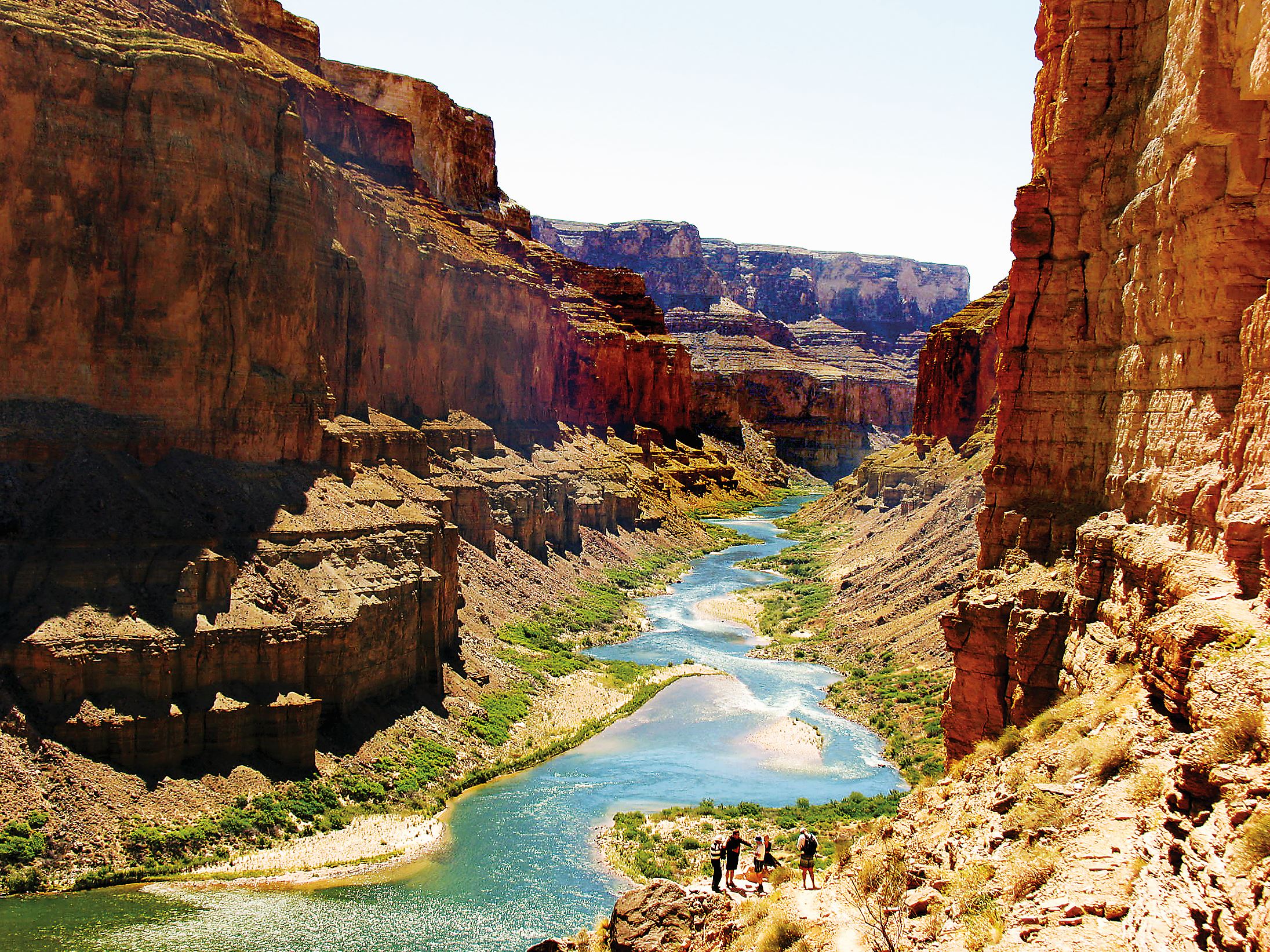At a seminar on all things Grand Canyon-related, Mateo Robbins presented a brief history of the development of water rights and usage of the Colorado River on Wednesday. The presentation started from the settlement of Anglos in the western United States and took us through the process of allocating water from the Colorado, to where water rights now stand.

In order to understand the importance of water rights to the Colorado River, Robbins impressed upon us the dependence of certain interests on the River. Before settlement of Anglos in the West, the River provided the lifeblood to numerable indigenous tribes. Currently, in addition to providing sustenance to indigenous people, theColorado River provides water to approximately 36 million people, is the host of numerous types of recreation-resulting in a revenue of approximately 26 billion dollars-and generates power through the hydroelectric plants at Glen Canyon and Hoover Dams. So how did we get to this point where the Colorado River is considered such a hydrologic powerhouse of electricity, revenue, and water?
In the early 1920s, as California was in a state of rapid development and growth, the state yearned for a solution to its burgeoning agricultural enterprise-a dam on the Colorado to divert water to California’s Imperial Valley. In order to get federal assistance in this endeavor, all states contributing to, and benefiting from, the Colorado River watershed needed to come to an agreement on water entitlement. Wyoming, Colorado, Utah, and New Mexico comprised the “Upper Basin” and Nevada, Arizona, and California comprised the “Lower Basin”. Delph Carpenter assigned these designations in order to propose an agreement that would divide water rights 50/50 to the Upper and Lower Basins.
The only problem with this creative division of rights was the period of record used to assign the amount of water to be divided. At the beginning of the 20th century, the western United States was experiencing an anomalously wet 20-year period. This wet period led the dividers of rights to believe that the Colorado River would provide 15 million acre-feet (MAF) of water to the Upper and Lower Basins and 1.5 MAF to Mexico. However, as the coming years would show, that 16.5 MAF total-allocatable-water-value was unrealistic in an arid region such as the South-Western US. Because of this hydrologic shortcoming, the division of water remains a contentious issue.
In addition to the growing demand for water to sustain the projected Homo sapiens population, some humans are also demanding water be allocated to the survival of riparian and aquatic species which have been severely affected by the alteration of the Colorado River. The River itself no longer reaches points it used to, such as the Gulf of California. The Colorado River Delta, once a vibrant and diverse biosphere, has now been dry for decades (except one pulse flow, which required a mass purchase of water from Mexican farmers). As well as the flow disturbance, the Glen Canyon and Hoover Dams are a hindrance to the natural course of sediment through the Colorado River watershed to the Gulf of California. The pre-dam river hydraulically transported sediment, which shaped microhabitats along the river, sustaining a variety of endemic species. Now that the Colorado no longer receives the bouts of sediment it used to, conditions have been made favorable to invasive species in both flora and fauna, which are changing the riparian ecosystem structure.
Over the years, a bundle of arbitrations known as the Law of the River have attempted to settle the arguments between states and interests in the allocation of the Colorado River’s water. The Law of the River is comprised of international treaties with Mexico, interstate compacts, a US Supreme Court decision between California and Arizona, and many other federal statutes and regulations. Just as many attempts at an agreement over water rights have gone on before us, many more will ensue in the coming years as we face uncertainty in climate, water availability, and human population growth.
In order to keep the mood light on Wednesday’s seminar, Mateo Robbins likened this uncertainty and water allocations to a hypothetical scenario on our upcoming Grand Canyon rafting trip. Once in the Canyon, after being ensured each party would have a respectable amount of beer, we all come to the sudden understanding that there will be a shortcoming to at least three persons in the trip. The issue at hand now: who holds the senior beer-rights to their previously promised portion of beer? Inevitably one or more people will be disappointed with their lack of ale, and will have to seek some other source of social lubricant.
